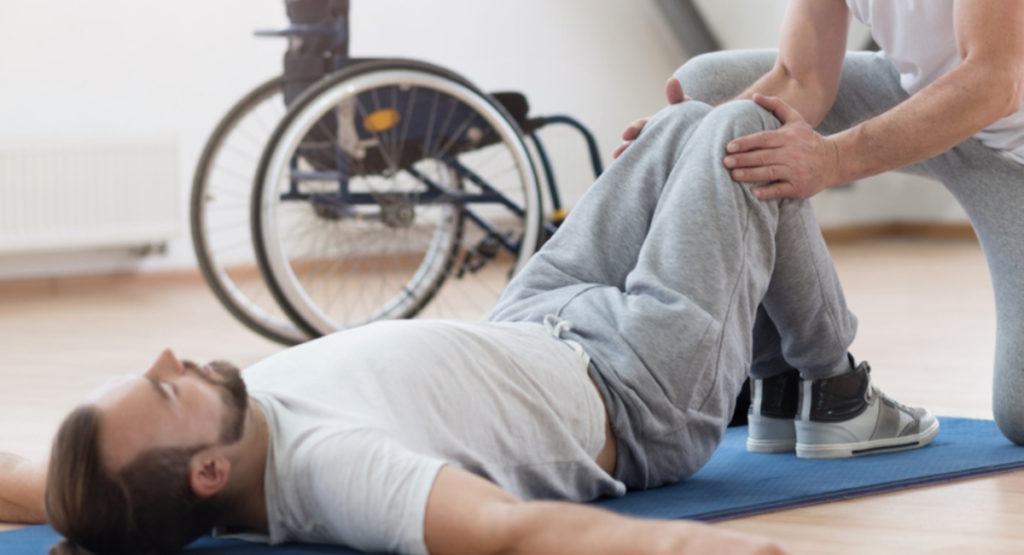Neurological conditions, such as strokes, traumatic brain injuries, or degenerative disorders, often bring challenges that extend beyond medical treatments. Rehabilitation plays a pivotal role in restoring functions and enhancing the quality of life for individuals affected by these conditions. While professional guidance is essential, incorporating neuro rehabilitation exercises at home is equally crucial, especially for Indian patients who may face unique cultural and accessibility considerations. This step-by-step guide aims to empower individuals and their caregivers with effective exercises that can be seamlessly integrated into the Indian home setting.
Importance of Neuro Rehabilitation Exercises at Home
The importance of neuro rehabilitation exercises at home is paramount, offering a continuous and personalized approach to recovery for individuals grappling with neurological conditions. These exercises play a pivotal role in fostering neuroplasticity, the brain’s ability to adapt and reorganize itself, which is fundamental for recovery.
1. Continuity of Care: One of the critical aspects of home-based neuro rehabilitation exercises is the continuity of care. The rehabilitation process is ongoing, and engaging in exercises at home ensures a seamless continuation of efforts to stimulate neuroplasticity.
2. Enhanced Functional Independence: A key benefit of home exercises lies in their ability to target specific movements and functions relevant to daily life, promoting enhanced functional independence. Whether it’s walking, reaching, or grasping, these exercises are designed to address individual needs and goals, offering a tailored approach to recovery.
3. Cultural Relevance and Familiarity: Cultural relevance and familiarity with the home environment play a significant role in the success of rehabilitation efforts. Home-based exercises can be designed to incorporate culturally relevant activities, making the rehabilitation process more resonant and enjoyable.
4. Empowerment of Individuals and Caregivers: Beyond individual empowerment, engaging in home-based exercises also empowers caregivers. It fosters a collaborative approach where both individuals and their support networks actively participate in the rehabilitation process.
5. Consistency in Physical Activity: Consistent physical activity is a cornerstone of health and well-being, and home exercises ensure regular engagement. They provide an accessible and cost-effective alternative, especially in regions where access to specialized rehabilitation facilities may be limited.
6. Long-Term Maintenance of Gains: Home exercises contribute to the long-term maintenance of gains achieved during formal rehabilitation. Sustaining these improvements is crucial for long-term well-being, and home-based exercises play a significant role in supporting the continued functional abilities gained through professional therapy.
7. Psychological Well-being: The psychological dimension of recovery is closely intertwined with physical rehabilitation. This psychological boost is instrumental in maintaining motivation and mental well-being throughout the rehabilitation journey.
Guidelines for Performing Neuro Rehabilitation Exercises at Home
The following guidelines are intended to assist individuals and caregivers in implementing neuro rehabilitation exercises at home:
1. Consistency and Routine: Establishing a routine for neuro rehabilitation exercises is paramount. Consistency is key to seeing progress in rehabilitation. Setting a specific time each day for exercise helps form a habit and promotes regular engagement, contributing to the overall effectiveness of the rehabilitation process.
2. Gradual Progression: Begin with simple exercises and gradually increase intensity. Starting at a comfortable level and progressively advancing prevents overexertion and minimizes the risk of injury. This approach allows the body to adapt to increasing challenges over time, fostering a gradual and sustainable progression.
3. Safety First: Prioritize safety during exercises. Ensuring the exercise area is free of hazards, using stable furniture or support structures when needed, and being mindful of body positioning is essential to prevent falls or injuries. Safety considerations are fundamental to creating a secure environment for rehabilitation activities.
4. Individualization: Tailor exercises to individual needs and abilities. Recognizing that each person’s recovery journey is unique, customization is crucial. By adapting exercises based on the individual’s condition, specific challenges, and goals, rehabilitation efforts can be maximally effective.
5. Listen to the Body: Pay attention to how the body responds to exercises. If there is pain, discomfort, or unusual sensations, it’s crucial to modify the activity or consult with a healthcare professional. Listening to the body is a key aspect of ensuring safe and effective rehabilitation.
6. Range of Motion Exercises: Incorporate exercises that focus on joint flexibility and range of motion. Range of motion exercises help maintain flexibility in joints, reduce stiffness, and improve overall mobility. They are essential components for enhancing daily activities.
7. Strengthening Exercises: Include exercises that target muscle strength. Strengthening exercises contribute to improved stability and functional abilities. They can be adapted to various levels of difficulty based on the individual’s strength, ensuring a progressive approach to rehabilitation.
8. Balance and Coordination Exercises: Integrate exercises that enhance balance and coordination. These exercises contribute to preventing falls and improving overall stability. Simple activities like standing on one leg or walking in a straight line can significantly benefit the individual’s sense of balance.
9. Regular Review and Adjustments: Regularly review exercises and make necessary adjustments. As the individual progresses, exercises may need modification or advancement. Regular reviews, ideally with guidance from a healthcare professional, ensure the rehabilitation plan evolves with the individual’s capabilities.
10. Psychological Well-being: Acknowledge the psychological aspect of rehabilitation. Celebrating achievements, staying positive, and maintaining motivation are integral aspects of ensuring the psychological well-being of the individual. A positive mindset contributes significantly to a holistic recovery.
11. Family Involvement: Encourage family members to participate. Involving family members creates a supportive environment and fosters a sense of community. Family participation can make the rehabilitation process more enjoyable and effective, enhancing the overall support system.
12. Professional Guidance: Seek guidance from healthcare professionals. Consulting with physiotherapists or rehabilitation specialists is crucial. They can provide guidance on specific exercises, monitor progress, and make recommendations based on the individual’s condition, ensuring a well-informed and professionally guided rehabilitation journey.
Conclusion
Neuro rehabilitation exercises at home empower Indian patients on their journey to recovery. By fostering a safe and supportive home environment, incorporating targeted exercises, and overcoming cultural barriers, individuals can actively contribute to their well-being. The fusion of traditional Indian values with modern rehabilitation techniques creates a holistic approach that resonates with the cultural fabric of the nation. In this collaborative effort between healthcare professionals, individuals, and their families, the path to neurological recovery becomes not just a regimen but a shared and culturally enriched experience.
We are India’s first comprehensive continuum care provider. We provide multidisciplinary out of hospital care to acute and post-acute and chronically ill patients at our critical care facilities and your home.


